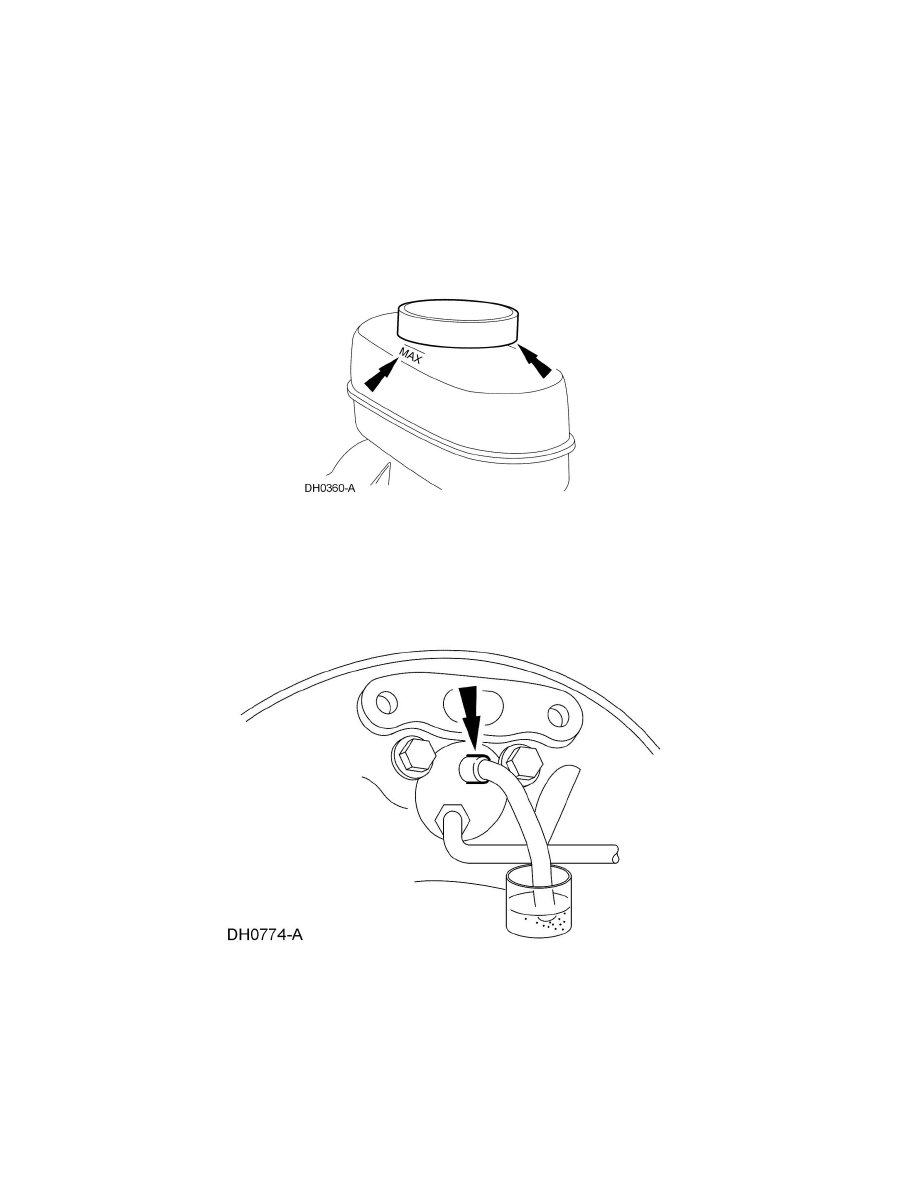Tribute 2WD L4-2.5L (2009)

WARNING:Do not use any fluid other than clean brake fluid meeting manufacturer's specification. Additionally, do not use brake fluid that has been
previously drained. Following these instructions will help prevent system contamination, brake component damage and the risk of serious personal
injury.
WARNING:Carefully read cautionary information on product label. For EMERGENCY MEDICAL INFORMATION seek medical advice. For
additional information, consult the product Material Safety Data Sheet (MSDS) if available. Failure to follow these instructions may result in serious
personal injury.
WARNING:Do not spill brake fluid on painted or plastic surfaces or damage to the surface may occur. If brake fluid is spilled onto a painted or plastic
surface, immediately wash the surface with water.
NOTE:The hydraulic control unit (HCU) bleeding procedure must be carried out if the HCU or any components upstream of the HCU are installed new.
NOTE:Pressure bleed the brake system at 207-345 kPa (30-50 psi).
NOTE:Due to the complexity of the fluid path within the hybrid brake system, it is necessary to pressure bleed this system.
1. Clean all dirt from and remove the brake master cylinder filler cap and fill the brake master cylinder reservoir with clean, specified brake fluid.
2. Install the bleeder adapter to the brake master cylinder reservoir, and attach the bleeder tank hose to the fitting on the adapter.
NOTE:Master cylinder pressure bleeder adapter tools are available from various manufacturers of pressure bleeding equipment. Follow the instructions
of the manufacturer when installing the adapter.
3. Remove the RR bleeder screw cap and place a box-end wrench on the RR bleeder screw. Attach a rubber drain hose to the RR bleeder screw and
submerge the free end of the hose in a container partially filled with clean, specified fluid.
NOTE:Make sure the bleeder tank contains enough clean, specified brake fluid to complete the bleeding operation.
4. Open the valve on the bleeder tank.
-
Apply 207-345 kPa (30-50 psi) to the brake system.
5. Loosen the RR bleeder screw. Leave open until clear, bubble-free brake fluid flows, then tighten the RR bleeder screw to specifications. Remove
the rubber hose.
